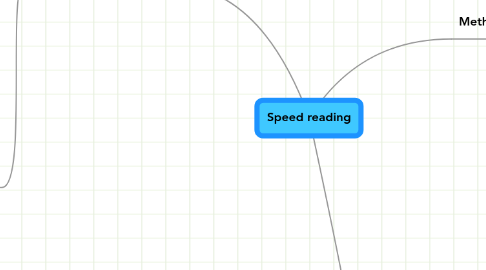
1. Build-up environment
1.1. Have interest to the author
1.1.1. Research before reading
1.1.1.1. Personality
1.1.1.2. Family
1.1.1.3. Life
1.1.1.4. Opinion
1.1.2. Research before reading (photo-reading again after this)
1.1.2.1. Visit location in the book
1.1.2.2. Books of similar topic
1.1.2.3. Other books of the same author
1.1.2.4. Check bibliography
1.2. Place
1.2.1. Outside (do something when people don't do anything)
1.2.1.1. Crowd
1.2.1.2. Library
1.2.1.3. Cafe
1.2.1.4. Food court
1.3. 5 senses (Comfort, Relax, Concentration)
1.3.1. Temperature (feel)
1.3.1.1. keep warm
1.3.1.2. Keep cool
1.3.2. Color (eye)
1.3.2.1. Mind map
1.3.2.2. Use own pocketbook
1.3.2.2.1. Note your own idea
1.3.2.3. Picuture
1.3.3. Smell
1.3.3.1. Conditionality
1.3.3.2. Concentraton
1.3.3.2.1. Mint
1.3.3.2.2. Soap
1.3.3.2.3. Cent
1.3.4. Sound (ear)
1.3.4.1. Genre
1.3.4.1.1. Jazz
1.3.4.1.2. Classic
1.3.4.1.3. Flamenco
1.3.4.2. Volume
1.3.4.3. Accoustic system
2. Why speed reading?
2.1. Find your own professional area
2.1.1. Science
2.1.1.1. Living organism
2.1.1.1.1. Human
2.1.1.1.2. Animals
2.1.1.1.3. Human and animals
2.1.2. Education
2.1.2.1. How to prove my existence
2.1.2.1.1. Memory
2.1.2.1.2. Influence on next generations
2.1.2.1.3. Human network
2.1.2.1.4. Transmit what I have to people who don't have
2.1.3. Niche
2.1.3.1. No.1
2.1.4. 200 books per topic
2.1.5. Syntopic reading
2.1.5.1. Do NOT touch omnibus
2.1.5.2. Be more specific to the type of information
2.1.5.2.1. New interest in the same topic
2.2. Knowledge
2.2.1. Output
2.2.1.1. Discover wisdom
2.2.1.2. Your own value / brand
2.2.1.3. Translation
2.2.1.4. Use in daily life
2.2.1.4.1. Share with other people
2.2.1.4.2. Shape of happiness
3. Methods
3.1. BTR (Basic Training for Readers)
3.1.1. Effect
3.1.1.1. Broaden the eyesight
3.1.1.1.1. Increase amount of possible information
3.1.1.2. Extend the focus area
3.1.1.2.1. More input as knowledge
3.1.1.3. Speed up
3.1.1.3.1. Get used to the routine
3.1.1.3.2. Repeat the same thing again and again
3.1.2. Practical use in daily life
3.1.2.1. Conscious to the edge of the eyesight
3.1.2.1.1. during brushing teeth
3.1.2.1.2. Soccer
3.1.2.1.3. Observation of people
3.1.2.1.4. on a bicycle or in a car
3.1.2.2. Multitasks
3.1.2.2.1. Separation of physical and mental activity
3.1.3. Heavier burden
3.1.3.1. Need focus
3.1.3.2. Strict to yourself
3.2. Photo Reading
3.2.1. Re-read books you read already
3.2.1.1. to read more than 1 book at the same time
3.2.2. Know your unconciousness
3.2.2.1. have moment of on / off
3.2.3. Trust your brain
3.2.3.1. quantity than quality
3.2.3.2. mentality of "I don't care if this doesn't work out"
3.2.4. 3 steps
3.2.4.1. Photo Focus
3.2.4.2. Review
3.2.4.2.1. Set up of Q&A (difficult!)
3.2.4.3. Speed reading
3.2.4.4. + autosuggestion before and after photo reading
3.2.5. What kinds of books
3.2.5.1. Dictionary
3.2.5.1.1. Japanese
3.2.5.1.2. English
3.2.5.1.3. Spanish
3.2.5.2. Writing rules
3.2.5.2.1. Rule of publishers
3.2.5.3. Medical
3.2.5.3.1. Anatomy
3.2.5.3.2. Bionomy
3.2.5.3.3. Pathology
3.2.5.4. Environment
3.2.5.4.1. Ecology
3.2.6. Balance of right / left brain
